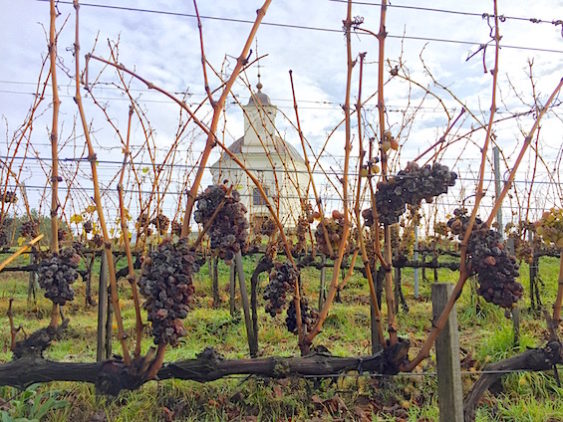It might surprise you to learn that one of the most important components of making some sweet wines is…a fungus.
That’s right, without a little fungus called botrytis cinerea that grows naturally on grape skins, some of the world’s most famous sweet wines including Sauternes from France, Spätleses from Germany and Hungary’s Tokaji Aszu wines wouldn’t be possible.

Botrytis at work on grapes in the Terezia vineyard in Tokaj.
Botrytis takes hold in vineyards during humid weather and attacks the skin of the grapes. Once it gets inside, it sucks the water out of them, concentrating the sugars, acids and minerals inside. Botrytis-affected grapes essentially shrivel into raisins. That can produce interesting and complex flavors as well as the sugar-acid balance that are the cornerstones of a great sweet wine.
However, as with many things in life, timing is everything. If botrytis takes hold too early, the grapes might shrivel too much too soon and that balance can be thrown off. If it takes hold too late, you might not get the concentration of components and flavors you need to make a good wine. If there’s a lot of rain after the initial infection, grape skins might swell and burst, exposing the grapes to harmful bacteria that either produce funky flavors or make them unusable altogether. There are also other kinds of fungus in vineyards and wine cellars that are just plain harmful. Managed carefully (and with a lot of luck), though, botrytis is a beneficial parasite without which certain wines as we know them would not exist.
I was just in Hungary’s Tokaj region learning about the famous sweet wines they’ve made there for centuries, and since it was November, I had a chance to see botrytis in action in the vineyards.
Here’s a quick video to show you what it looks like.
Ugly fungus, delicious wines!

